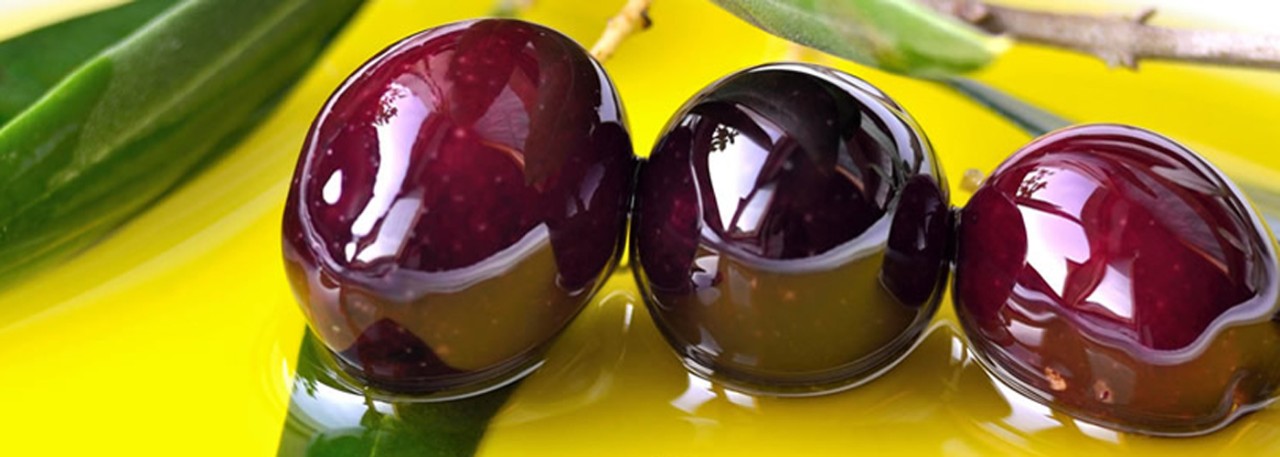.png.transform/rendition-xs/image_image%20(1).png)
Montes de Granada PDO
Extra virgin olive oil obtained from the fruit of olive trees (Olea europea, L.) principally of varieties Picual, Lucio, and Loaime, but also Escarabajuelo, Negrillo de Iznalloz, Hojiblanca and Gordal de Granada, all of them grown within the PDO’s delimited area.
Tasting notes
In general, these oils have a fruity aroma and flavor suggestive of young or ripe freshly ground olives. They are slightly bitter and full-bodied in the mouth, varying in intensity according to the degree of ripeness of the olives from which they derive. They are low in acidity, and range in color from deep green to greenish yellow. In oils that are blends of more than one variety, the forceful character of predominant variety Picual prevails, imparting its green color, medium-to-intense bitterness, and fruity aromas. The presence of other varieties tempers these attributes, contributing fresh aromas evocative of assorted fruits, sweetness of flavor and more golden colors.
Other notes
The lipid profile of these oils exhibits high oleic acid content, generally over 80% and sometimes as high as 83%. The proportion of monounsaturated/polyunsaturated fatty acids is also high(12 to 20), making them a nutritionally sound option. They are chemically very stable, thanks largely to the components responsible for their bitter flavor – an attribute that makes them more resistant to oxidation than other oils.
Production / Processing method
Planting of olive trees is usually timed to capitalize on the rainy season in autumn and winter, when young trees are planted in holes prepared in the soil some 50 cm (19.68 in) deep. Planting patterns vary depending on the age of plantations: the oldest are set out in a grid of 12 m (39.39 ft) squares, others in 8 m (26.24 ft) squares, with between two and four trees being planted per square. More recent groves use a grid of 5 m squares (16.40 ft), with just one tree per square.
The soil is generally turned over to get rid of weeds, cracks and encrusted soil so as to prevent moisture loss and soil compaction. The 'no-tillage' method, using green manure cover crops, is also used, though to a lesser degree. Trees are pruned to get rid of non-productive branches and shoots, and regulate growth. The use of fertilizers and plant protection products varies depending on soil-type, outbreaks of pests and/or disease, and is also governed by weather conditions.
This area’s olive groves are 95% unirrigated. However, the last few years’ drought has resulted in drip irrigation systems being installed in some so that production can be better regulated. This type of irrigation is used from March to September, depending on how much it rains.
The methods used for harvesting olives collected before they touch the ground are both manual (shaking the branches with a long pole) and mechanical (using vibrating equipment). Olives gathered from the ground are transported separately and processed in a different production line since they are not suitable for producing DO protected oil. Transporting olives to the mill is always done on the day that they are harvested, and with great care.
On arrival at the mill, the olives are unloaded, cleaned, weighed and washed. These operations all serve the purpose of classifying the fruit and getting rid of remains of leaves, twigs, dust and like.
The next stages are grinding and mixing, whose purpose is to break up the olives and facilitate the extraction of oil from the cellular structures within them. Once this has been achieved, the liquid oil is separated from the solids of the resultant paste.
After extraction, the oil is stored in stainless steel tanks in controlled light and temperature conditions before being packaged in authorized receptacles.
Geography / Relief and climate
This area’s relief, soil and climate characteristics are unusual and extreme, and olives are the crop best suited to its demanding conditions. Its landscape is predominantly semi-mountainous, with depressions 750 to 900 m (2,640 – 2,952 ft) deep alternating with mountain chains ruining from east to west with altitudes of up to 2,000 m (6,651 ft). Overall, its landscape shows sharp forms composed of limestone rocks, while in other areas the terrain is also steep, consisting of hills and outcrops of chalk, marl-chalk and marl. The further eastward one goes, the gentler the landscape becomes, tending to form a lower-lying plateau interrupted at this area’s eastern extreme by the Fardes River valley, its natural boundary to the east. From there on the physical geography changes, becoming more typical of the arid landscape of south eastern Spain.
The area’s range of soil types is complex, most of them being combinations of several. The predominant types are the product of decomposition of some variety of limestone. They are rich in marl-chalky material eroded from the mountains, and as such possessing a high calcium carbonate content (over 40%), subsequently modified by constant agricultural activity at surface level.
The climate is Continental Mediterranean, and exhibits notable temperature shifts with big differences between highs and lows for days and nights, winters and summers. Average annual rainfall varies from 400 to 600 mm (15.74 – 23.62 in), and even less during periods of drought. Winters are long and cold, with frequent frosts and snow, and summers are long and hot, with temperatures sometimes passing the 40° C (104º F) mark.
Regulatory Council
Consejo Regulador de la DOP Montes de Granada
C/ Madrid, 101
18566 Benalúa de las Villas (Granada)
Tel: (+34) 958 407 083
info@domontesdegranada.com
www.domontesdegranada.com
Sources:
- Spanish Ministry of Agriculture
They are chemically very stable an attribute that makes them more resistant to oxidation than other oils.


- Montes de Granada 1
- Montes de Granada 2
